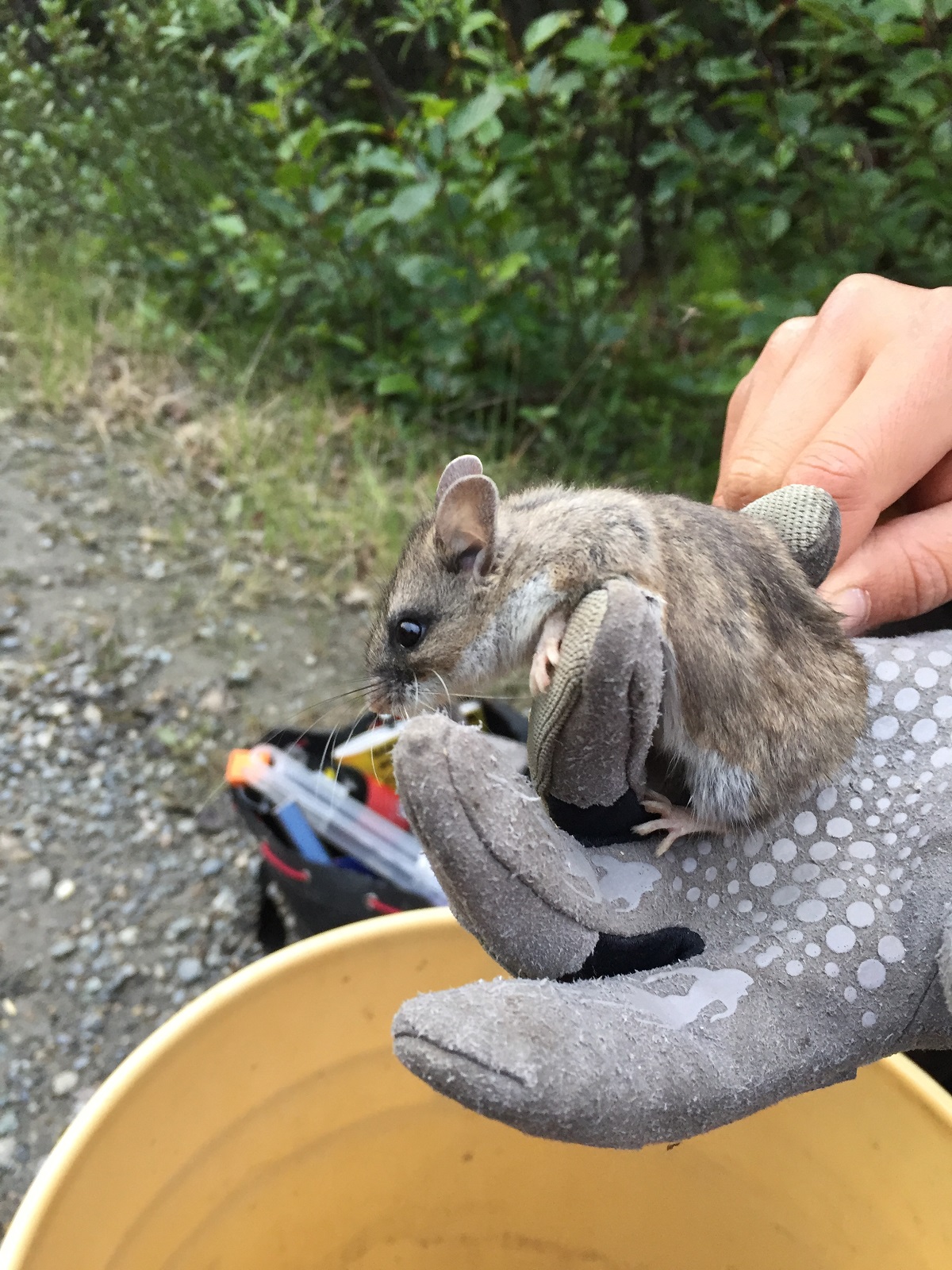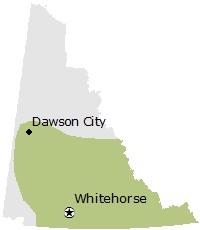
Name
- Common name: North American Deermouse
- Including: Northwestern Deermouse (Peromyscus keeni)
- Scientific name: Peromyscus maniculatus
- Order: Rodentia
- Family: Cricetidae
Also known as
Deermouse, Wood Mouse
Viewing opportunities
- You’ll need to sit in the forest quietly late at night to see deermice. They prefer dry habitats and running along logs.
- You might see signs of its presence by spotting droppings on the forest floor or a ball-like nest made of grasses tucked into a stump.
Description
- Dark grey to brown coat.
- White feet, chin and belly.
- Long tail, dark along top, light on bottom.
Fast facts
- Length: 10 cm
- Weight: 20 g
- Lifespan: 4 to 8 years
- Predators: Birds of prey, Least Weasels, Ermine
- Habitat: Boreal Forest
Conservation status
- Yukon: S5 (Secure)
- Global: G5 (Secure)
Yukon population estimate
Not determined.
Behaviour
Deermice are nocturnal. They spend their days in burrows or tree nests made of plant material. They spend much of their lives on the dry forest floor collecting seeds and nest material and storing them away for winter, but they can also climb trees in search of fresh buds. Deermice don’t hibernate but will escape the coldest weather in torpor, where they reduce their metabolism and body temperature and stop moving for a short period of time.
Diet
Seeds, grasses, forbs, fungi, insects.
Distribution

Sights and sounds

Deermouse tracks, front: 0.8 x 0.8 cm, hind: 1 x 0.8 cm.
Deermice and people
- The presence of deermice is often only noticed when they invade homes and buildings. They will shred mattress stuffing and leave droppings on kitchen counters.
- Deermice are different than House Mice in that they can survive outdoors in the extreme cold winters and do not rely on human structures for shelter, though they will take advantage of them when possible.
- Deermice can transmit a serious disease to humans called Hantavirus. People with mouse droppings in a building or camper are advised to seek information from their community health centre for precautions to take in cleaning droppings.